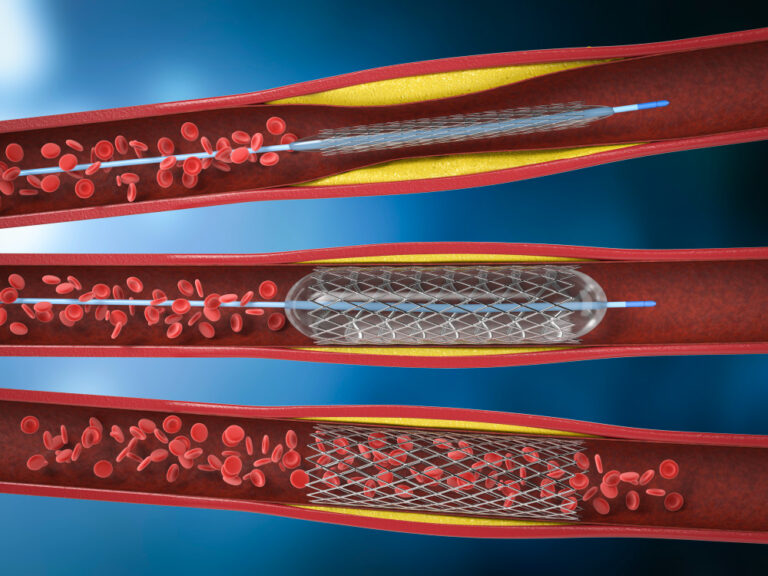Introduction
In the ever-evolving landscape of medical diagnostics, Angiography stands out as a critical procedure that allows healthcare professionals to visualize and assess the condition of blood vessels.
This imaging technique is indispensable for diagnosing and treating a variety of vascular conditions, from coronary artery disease to peripheral artery disease and beyond. With advancements in technology, Angiography has become more precise, less invasive, and more accessible, offering hope and solutions to patients worldwide.
This comprehensive guide will delve into what Angiography is, the symptoms that might necessitate the procedure, the different types of angiography, associated costs, treatment options following an angiography, and how services like DocTrePat can assist you through the process.
What is Angiography?
Angiography, also known as arteriography, is a medical imaging technique used to visualize the inside of blood vessels and organs of the body, with a particular focus on arteries, veins, and the heart chambers. The procedure involves injecting a contrast dye into the blood vessels and capturing images using X-rays, computed tomography (CT), or magnetic resonance imaging (MRI). These images help Doctors Diagnose and treat conditions affecting blood vessels, such as blockages, aneurysms, and other abnormalities.

The Procedure for Angiography
The Angiography procedure typically involves the following steps:
- Preparation: Patients are usually advised to fast for several hours before the procedure. They should also inform their doctor about any allergies, especially to contrast dye or iodine, and any medications they are taking.
- Injection of Contrast Dye: A contrast dye, usually iodine-based, is injected into the bloodstream through a catheter. The catheter is typically inserted into a blood vessel in the groin, arm, or neck.
- Imaging: Using X-rays, CT, or MRI, detailed images of the blood vessels are captured. These images reveal the structure and condition of the vessels, highlighting any abnormalities such as blockages or aneurysms.
- Analysis: Doctors analyze the images to identify any abnormalities, such as blockages or aneurysms. This analysis helps in planning the appropriate treatment.
Safety and Risks
While Angiography is generally safe, it does carry some risks. These can include allergic reactions to the contrast dye, bleeding or bruising at the catheter insertion site, and in rare cases, damage to the blood vessels or kidneys. However, these risks are minimal when the procedure is performed by experienced medical professionals.
Symptoms Indicating the Need for Angiography
Angiography is often recommended when patients exhibit symptoms that suggest vascular problems. Some common symptoms include:
- Chest Pain: Persistent chest pain, especially when associated with physical exertion or stress, can be a sign of coronary artery disease, which may require coronary Angiography to diagnose and evaluate the severity of the condition.
- Shortness of Breath: Difficulty breathing, particularly during physical activity, can indicate heart or lung issues. Pulmonary Angiography might be needed to assess conditions such as pulmonary embolism or other pulmonary vascular diseases.
- Leg Pain: Pain in the legs, especially during walking or physical activity (a condition known as claudication), may suggest peripheral artery disease. Peripheral Angiography can help diagnose and determine the extent of the disease.
- Stroke Symptoms: Sudden weakness, numbness, or confusion can indicate a stroke. Cerebral Angiography can be used to detect blockages or abnormalities in the brain’s blood vessels.
- Abnormal Test Results: Abnormal results from other diagnostic tests, such as electrocardiograms (EKG), stress tests, or echocardiograms, may lead to a recommendation for Angiography to obtain a more detailed view of the blood vessels and identify any underlying issues.
Types of Angiography
Angiography comes in several forms, each tailored to specific areas of the body and types of vascular conditions. Here are the primary types:
Coronary Angiography:
This type focuses on the heart’s arteries. It is used to diagnose coronary artery disease, evaluate the severity of heart conditions, and guide treatment decisions such as angioplasty or coronary artery bypass surgery.
Cerebral Angiography:
This type visualizes the blood vessels in the brain. It helps in diagnosing aneurysms, strokes, arteriovenous malformations (AVMs), and other cerebrovascular conditions. Cerebral Angiography can also be used to guide neurosurgical procedures.
Pulmonary Angiography:
This type examines the blood vessels of the lungs. It is primarily used to detect conditions such as pulmonary embolism, where blood clots block the blood flow to the lungs, and other pulmonary vascular diseases.
Peripheral Angiography:
This type targets the arteries in the limbs. It helps in diagnosing peripheral artery disease, which can cause pain, ulcers, and even gangrene in severe cases. Peripheral Angiography can guide treatments such as angioplasty and stenting in the limbs.
Renal Angiography:
This type visualizes the blood vessels of the kidneys. It is used to diagnose conditions such as renal artery stenosis (narrowing of the arteries that supply the kidneys), which can lead to hypertension and kidney damage.
Fluorescein Angiography:
This type is used specifically for the eyes, particularly the retina. It helps diagnose conditions such as diabetic retinopathy, macular degeneration, and retinal vein occlusion by highlighting the blood flow in the retina.
Angiography Costs
The cost of Angiography can vary widely depending on several factors, including the type of angiography, the healthcare facility, the geographic location, and whether the patient has insurance. Here is a general overview of the costs associated with different types of angiography:
Coronary Angiography:
This procedure typically ranges from $1,000 to $3,000 without insurance. With insurance, out-of-pocket costs can be significantly lower, depending on the coverage provided by the insurance plan.
Cerebral Angiography:
Costs for cerebral Angiography can range from $2,000 to $4,000, depending on the complexity of the procedure and the healthcare facility where it is performed.
Pulmonary Angiography:
This procedure generally costs between $1,500 and $3,500. The cost may vary based on the facility and the specific requirements of the procedure.
Peripheral Angiography:
The cost for peripheral Angiography ranges from $1,500 to $3,000. Factors such as the extent of the examination and the healthcare provider can influence the total cost.
Renal Angiography:
This procedure typically costs between $1,000 and $2,500. The cost can vary based on the complexity of the case and the healthcare facility.
Fluorescein Angiography:
This specialized type of Angiography usually costs between $500 and $1,000. It is generally less expensive due to its targeted application and the equipment used.
These costs may include the procedure itself, the use of contrast dye, imaging fees, and hospital or facility fees. Additional costs may arise if the patient requires further treatment, hospitalization, or follow-up care.
Treatment Following Angiography
The treatment plan following Angiography depends on the findings from the procedure. Here are some potential outcomes and treatments:
- Medication: If blockages or abnormalities are found, doctors may prescribe medications to manage the condition. These can include blood thinners to prevent clot formation, cholesterol-lowering drugs to reduce plaque buildup, or antihypertensives to control high blood pressure.
- Lifestyle Changes: Patients may be advised to make lifestyle changes to improve their vascular health. These changes can include adopting a heart-healthy diet, increasing physical activity, quitting smoking, and managing stress. These measures can help prevent the progression of vascular diseases.
- Angioplasty and Stenting: For significant blockages, angioplasty (a procedure to open narrowed or blocked blood vessels) and stenting (placing a small wire mesh tube to keep the artery open) may be necessary. These procedures can restore blood flow and relieve symptoms such as chest pain or leg pain.
- Surgery: In severe cases, surgical interventions such as coronary artery bypass surgery (for severe coronary artery disease) or aneurysm repair (for large aneurysms) may be required. Surgery is typically considered when less invasive treatments are not sufficient.
- Regular Monitoring: Patients may need regular follow-up appointments and imaging to monitor their condition and ensure that the treatment is effective. Ongoing monitoring can help detect any changes in the condition and allow for timely adjustments to the treatment plan.
Conclusion
Angiography is a vital tool in modern medicine, offering precise and detailed insights into the health of blood vessels and enabling effective diagnosis and treatment of various vascular conditions. While the procedure involves some costs, the benefits of early detection and intervention can significantly outweigh the expenses, potentially saving lives and improving the quality of life.
If you or a loved one are experiencing symptoms that may indicate a vascular problem, consult with a healthcare provider to discuss whether Angiography is appropriate. The procedure can provide critical information that helps doctors develop effective treatment plans tailored to your specific needs.
For those seeking reliable and comprehensive medical services, DocTrePat offers expert guidance, support, and access to top-tier healthcare professionals to ensure you receive the best possible care.
Whether you need assistance with scheduling an angiography, understanding your diagnosis, or navigating the treatment options, DocTrePat is here to help. Don’t hesitate to reach out to DocTrePat for all your medical needs and concerns. Your health is our priority.

